Bonnie and Clyde (1967)
“Bonnie and Clyde are the Barrow gang, I’m sure you all have read / How they rob and steal, and those who squeal, are usually found dyin’ or dead.”
|
Synopsis: |
|
Genres, Themes, Actors, and Directors:
Review: Notoriety aside, Bonnie and Clyde is a creative, well-acted drama, one which effectively portrays the alienation and frustration felt by many during the Great Depression. Dunaway (who’s never looked more beautiful) and Beatty (young and studly) are perfectly cast as the titular leads, who come together out of a desperate need for mutual recognition. They’re surrounded by a host of fine supporting actors — including Gene Wilder in a hilarious bit part, and the inimitable Michael Pollard in a role seemingly tailor-made for him. Ironically, Estelle Parsons’ Academy Award-winning performance as Beatty’s shrill sister-in-law is the least impressive of the bunch. Those looking for historical accuracy should read a book about Parker and Darrow instead: Bonnie and Clyde is just barely more authentic than its ’50s predecessor, The Bonnie Parker Story (starring sassy Dorothy Provine). For instance, while Penn’s inclusion of Clyde’s sexual “issues” was a daring move for the time, it’s nonetheless inaccurate (Barrow was reportedly bisexual, not impotent); and the real Bonnie and Clyde (both short) looked nothing like glamorous Dunaway and Beatty. Ultimately, Bonnie and Clyde is more of a tragic romantic fable than a biopic, with the infamous final shoot-out (featuring superb, oft-analyzed editing by Dede Allen) providing a shocking yet appropriate end to this warped fairy tale — how else could Bonnie and Clyde go out but violently, together? Redeeming Qualities and Moments:
Must See? Categories
(Listed in 1001 Movies You Must See Before You Die) Links: |

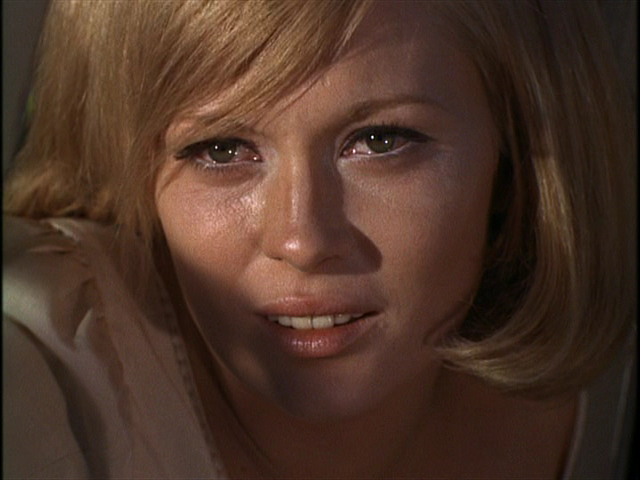


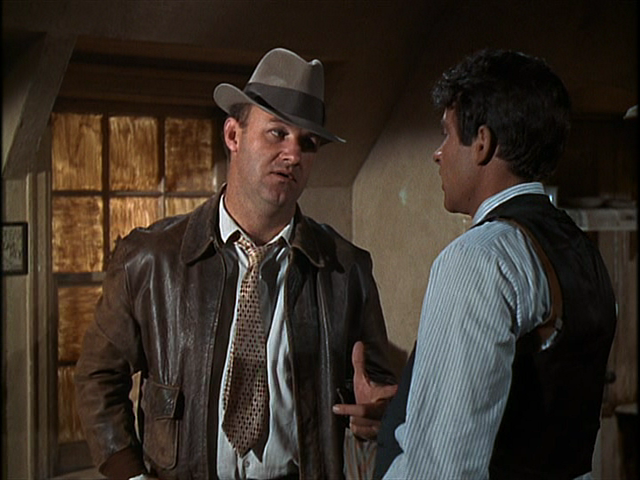

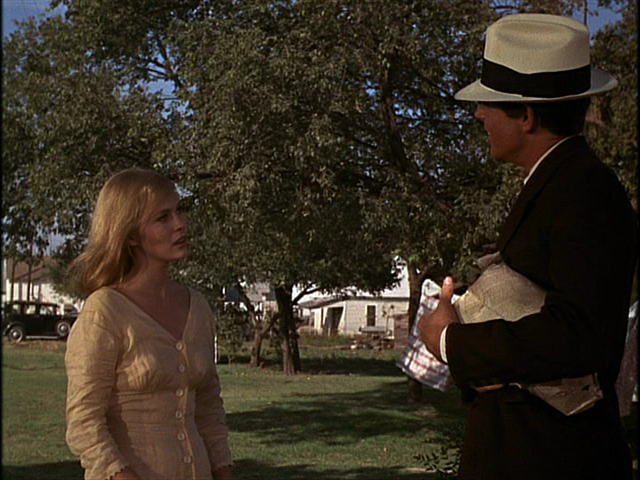
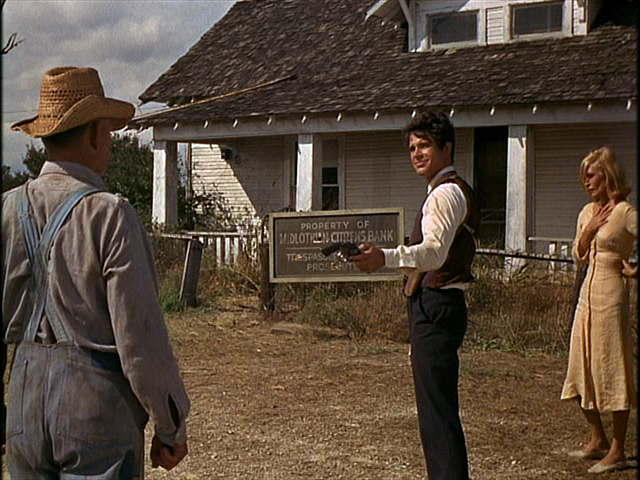

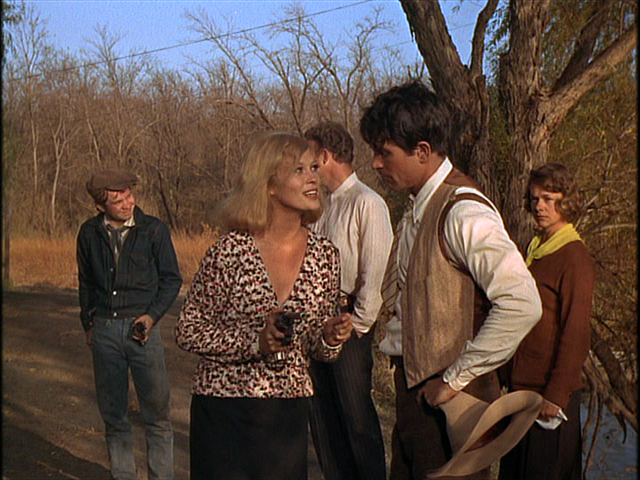
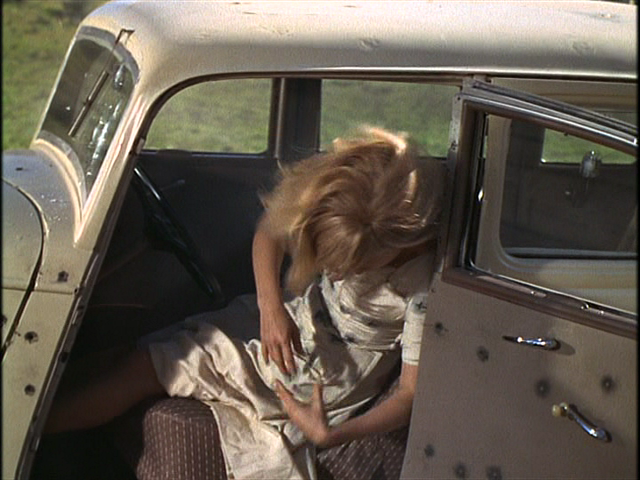

2 thoughts on “Bonnie and Clyde (1967)”
A no-brainer must. A major contribution to modern American cinema.
‘B&C’ is such a seminal work, in fact, that it’s surprising that Peary only includes it in the back of his book as an additional title. I saw it on release, when I was 12 – the year I was also being introduced to the French New Wave films that influenced Penn. So I suppose, rather than being shocked by the violence in ‘B&C’, it all kind of made sense to me (how European films were beginning to filter through into the work of American directors).
Putting the facts of this bio aside (since you have to in significant ways), this is one hell of a flick in every aspect. It moves like crazy and, once it takes off, never lets up. (Even the quiet first scene of Dunaway alone in her bedroom – opening with a close-up of her richly red lips – has a smoldering tension, which begins to simmer and boil as Beatty falls into the path of her backyard.) Great care was taken in how this story is told and all of the little touches help noticeably, esp. things like using non-professional actors (well) in the smaller speaking roles and Penn and DP Guffey’s generous use of midwest locales and landscapes. (Guffey very much deserved his Oscar.)
I do especially love how the film opens: with Depression-era snapshots (accompanied by camera clicks) and the names of the leading characters fading from white into blood-red – not to telegraph that all these characters will die (cause not all of them do), but that we should expect a no-holds-barred tale of terror, set squarely in a very specific time.
The overall casting is nearly perfect. (I admit I am also less impressed with Parsons here but I don’t really think it’s her fault. I’ve seen her give a number of fine performances – in theater as well – but even the real Blanche Barrow objected to Parsons’ unleashed hysteria. I suppose Penn had his own intention there for balance of some sort.) Beatty, Dunaway, Hackman and Pollard are so suited to their roles (as are some of the supporting cast members) that you almost – almost – forget they’re acting. Part of the reason for that could be Penn’s semi-documentary style of direction.
According to reports, Warner Bros. had absolutely no faith in this film at all. They apparently expected it to do little business (how could they not know what they had on their hands???). ‘B&C’, however, brought in $70 million worldwide – and since WB offered Beatty 40% of the gross, he obviously ended up one wealthy man.
NOTE –
For a long time, there was no end to rumors regarding the sexual habits of Bonnie & Clyde. I came across these interesting slices of info…but accounts do not seem to agree:
http://wiki.answers.com/Q/Was_Clyde_Barrow_gay
Re: Peary’s inclusion of “Bonnie and Clyde” in the back of his book, it’s actually listed in the Addendum of the revised version, meaning he simply forgot to include it! (I don’t make this distinction clear in my online lists; perhaps I should?)
At any rate, you’re right that he includes most “big name” titles in the front of his book, complete with reviews — but he also reviews such movies as “Zombie Island Massacre” there, so ultimately I believe his selections for the Front of the Book probably came down to: a) which titles he already had reviews written for, and/or b) which movies he knew well enough to be able to write about off the top of his head. All others, for the sake of time, were relegated to the Back of the Book! (Purely my hypothesis, naturally.)